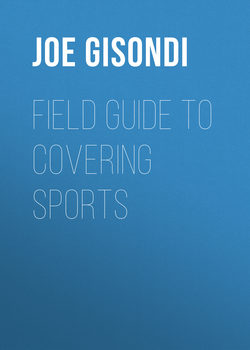Читать книгу Field Guide to Covering Sports - Joe Gisondi - Страница 36
На сайте Литреса книга снята с продажи.
Watch
ОглавлениеInterviewing is something of an out-of-body experience. On the one hand, you’re right there in the room, totally focused on what the person is saying. On the other, you’re also standing to the side, assessing the interview as a whole. You’re listening and talking and developing new questions all at the same time: Wait, what does he mean by that? How does it connect to what he said before, and to what others have said? What might he say if I asked X? If I want to use what he’s saying in my story, what else might I need to know?
So you’re watching yourself, and of course, you’re also watching the person you’re interviewing. Not all messages come from words. Keep an eye on body language. If the person you’re interviewing keeps arms tightly crossed or shows nervousness or discomfort in other ways and if time isn’t too short, take a moment to ask easy questions or make small talk and see if you can help the person relax.
During the interview, keep watching body language to help yourself understand what the person feels most passionate, excited, or upset about. Those are cues to more questions you can ask and good stories you can elicit. And don’t forget your own body language. Leaning back, for instance, makes you appear disinterested, as does repeatedly darting glances around a locker room, hunting for someone else to interview. Do just what you’d do when talking to a friend: Lean in to show you care.
